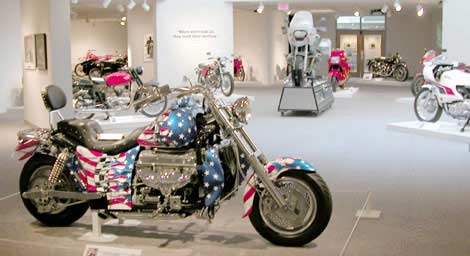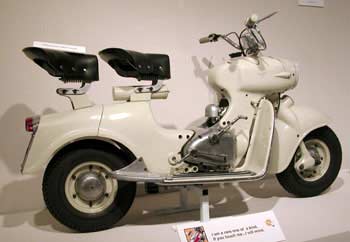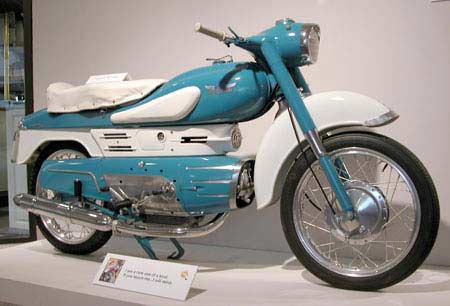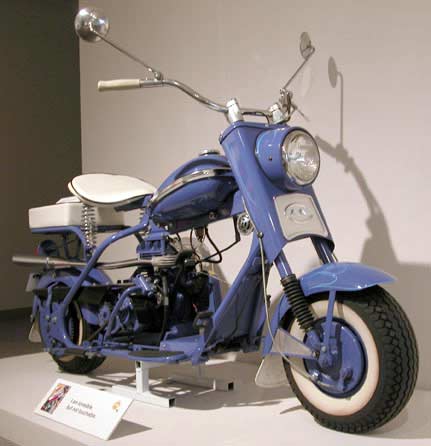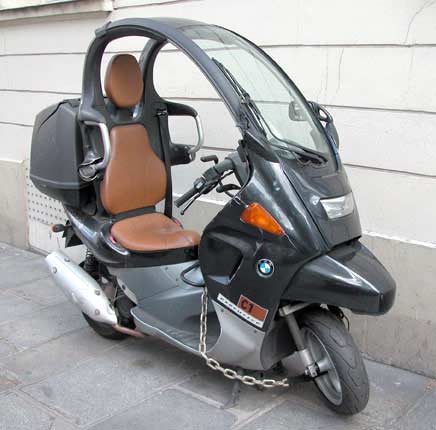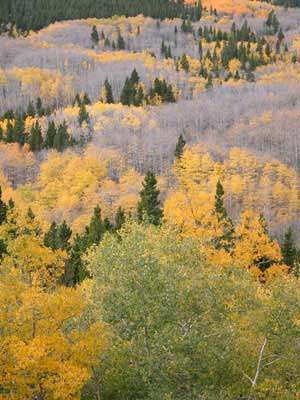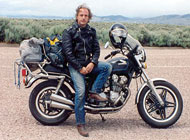Cold-Weather Testing Fleece-Lined Chaps
Monday, February 16th, 2009Saturday was very cold, so of course I went for a ride. Three rides, actually.
Cold weather was what I wanted because I had just received a new pair of fleece-lined chaps and I wanted to try them out. Here’s the full disclosure.
Lorna Reed, over in Palisade, had contacted me awhile back to inquire about advertising on the Passes and Canyons website. Lorna, through her company, Colorado Chaps, makes and sells chaps for bikers, horsemen, and anyone else who wants them. Long story short, she offered to make and give me a pair if I would try them out and then write about them in this blog. Mine to keep, regardless of whether I liked them or not, but she’d prefer if I didn’t write about them if I didn’t like them. Lorna was confident I would like them, however, and her confidence was well placed. I definitely give them a recommendation.
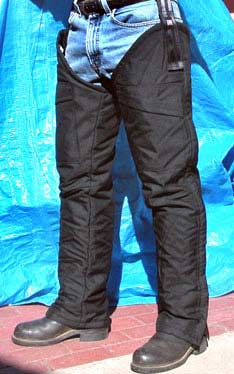 So let me tell you about my testing methodology and the results.
So let me tell you about my testing methodology and the results.
First I went out for a fairly short ride, with just my jeans, to get a feel for just how cold it was. It was cold! As soon as I took off down the street I felt the cold cutting through the jeans and my legs were not happy. Even after that brief ride I had to sit at home and warm up a bit before the next ride.
For my second ride I put on my trusty leather chaps that have been my standard cold weather gear. These are really top-quality chaps, with really thick, heavy leather. If leather chaps were going to keep me warm, these would do it.
Leaving the house it was immediately noticeable how much warmer it was than with just my jeans. Other parts of my body were cold but my legs felt fine. I took a much longer ride this second time, most of it on the highway, to give the cold a chance to do its stuff.
The cold did do its stuff. Aside from the fact that my fingers were turning to ice, the leather got cold and I could feel that cold through my jeans. The chaps were blocking the wind but that wasn’t enough to keep me warm. Nothing we don’t already know, of course. Leather is not a cold-weather insulator, it just blocks the wind and offers good protection if you go down.
Back at home again I really had to warm up before my third ride. Under other circumstances I would have ridden my Kawasaki so its fairing and engine heat would keep me warm, but today I had deliberately chosen the Honda because I knew it would be colder. The sacrifices I make to bring you good information . . .
OK, so I put on the Colorado Chaps fleece-lined babies and off I went again. Same route as the last time. I’d be lying if I told you I didn’t get cold. On a day like that you’re going to get cold no matter what. But the difference was clear. That fleece lining made a big difference. Plus,the heavy-duty Cordura nylon shell didn’t get as cold itself as the leather had, or at least it didn’t manage to transmit that cold to my legs.
The chaps were snug but not so tight as to make it hard to bend my knees. As with the leather chaps, around the top where they ended, the breeze got in and was chilling. But lower down there was no air infiltration and I stayed reasonably comfortable. I was pleased. I’ll definitely be putting these to use. Thank you Lorna.
So here’s the plug. Lorna runs a small Colorado business and she produces a good product. Plus, the price is definitely affordable. The heavy duty Cordura like mine costs $75 for a pair, plus $35 for the fleece lining. For $25 more you can get Kevlar in place of the Cordura. If you ride a Harley or some other bike where you risk contact with hot pipes, $20 will get you a “pipe patch” to protect them. And there are other extras you can order. Each pair is made to fit so you need to take your measurements with your riding gear on. Visit the website for the full scoop, or call Lorna at 970-464-5803.
Biker Quote for Today
May the sun be at your back, the wind in your face, and the bugs in your teeth.
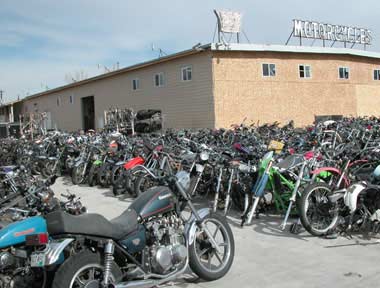 Mind you, Steele’s is a lot more than that. They sell used bikes of all kinds, they do service, and they sell both new and used parts. But it’s the salvage yard — to use the more PC term — that is totally fascinating.
Mind you, Steele’s is a lot more than that. They sell used bikes of all kinds, they do service, and they sell both new and used parts. But it’s the salvage yard — to use the more PC term — that is totally fascinating. You know about LoJack, right? They hide a radio transmitter in your vehicle and if it gets stolen the cops can often locate it quickly and get it back to you. And it’s not incidental that the guys who took it often end up getting picked up, too.
You know about LoJack, right? They hide a radio transmitter in your vehicle and if it gets stolen the cops can often locate it quickly and get it back to you. And it’s not incidental that the guys who took it often end up getting picked up, too.